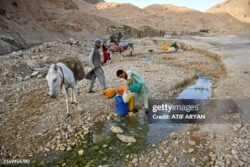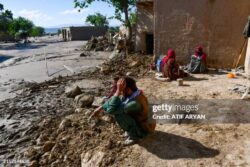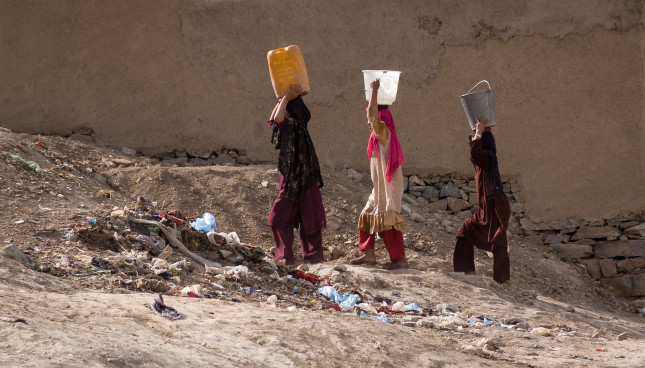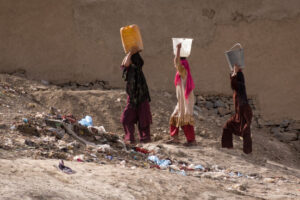Description
This blog was written by Ghulam Hussain Saadat, a young environmental activist in Afghanistan.
Afghanistan is one of the most vulnerable countries due to climate change, and it ranks 8th in terms of vulnerability. Both the international and national agencies working on these fields warn about the upcoming devastating disasters linked to on climate change, as the country already witnessed the impacts, evidenced by consecutive droughts, water scarcity, extreme summer heat, frigid winters, and flooding in various regions.
Although the country experienced sufficient precipitations in 2024, The Office for the Coordination of Humanitarian Affairs (OCHA) Afghanistan office reports that Afghanistan is experiencing its worst drought in three decades. Accordingly, the drought rate has been increased from 39 percent to 64 percent in 2022, and half of the population is affected due to climate-related shocks. Consequently, the consecutive drought leads the people to migrate from one region of the country to the other parts, and the result is a fragile economic condition. In addition to this, it fuels conflicts in some parts of the country as well.

The big cities of the country are combating with drinking water scarcity barely. According to the Afghan Aid, about 60 percent of the Afghan population does not have access to safe drinking water, and over 70 percent of them in rural areas deprived of sanitation services. When 60 percent of the people do not access safe drinking water, the primary victims are children and women. Insufficient water supply leads to severe health issues, human rights violations—including child marriage—and deprives children of their right to education.
As the global temperatures have raised by 1.3°C, Afghanistan is experiencing its unprecedented temperature in the summer and its coolest weather condition in the winters. For instance, regions traditionally known for their cooler climates is experiencing temperatures above 35 °C from June to August, which is an unprecedented temperature raise in some parts of the country. On the other hand, in recent years, some regions of the country has experienced one of their coolest cycles, lower than -35 °C in central and other parts of the country; therefore, hundreds of people and thousands of cattle have been died due to freezing weather in various parts of the country.

Flooding is another catastrophic impact of climate change that has killed dozens of people in the country. UNICEF Afghanistan reports that about 8000 homes have been damaged, and about 400 people, including children and women, have lost their lives due to flash floods in Baghlan, Ghor, Takhar, Badakhshan, and Faryab as a result of intense precipitations. While Afghanistan is ranked 15th out of 163 countries on UNICEF’s 2021 Children’s Climate Risk Index, the country is among the least responsible for creating climate change and natural disasters.
In conclusion, Afghanistan is one of the most vulnerable countries facing the urgent threat of climate change, necessitating significant global attention to mitigate this crisis. It is imperative to support vulnerable communities, including children and displaced families affected by climate change. Furthermore, enhancing public awareness and knowledge is crucial for combating this phenomenon and reducing its devastating consequences in the future.
▎Sources:
– [OCHA: Alarming Effects of Climate Change](https://www.unocha.org/news/afghanistan-alarming-effects-climate-change)
– [UNICEF: Water, Sanitation, and Hygiene](https://www.unicef.org/afghanistan/water-sanitation-and-hygiene)
– [Afghan Aid: Water Crisis Impacting Women and Girls](https://www.afghanaid.org.uk/news/the-water-crisis-in-afghanistan-is-making-the-situation-for-women-and-girls-much-harder)
– [UNICEF: Flash Floods Threatening Children](https://www.unicef.org/afghanistan/press-releases/flash-floods-afghanistan-posing-urgent-and-persistent-threat-children)
– https://www.climatecentre.org/wp-content/uploads/RCCC-Country-profiles-Afghanistan_2024_final.pdf




